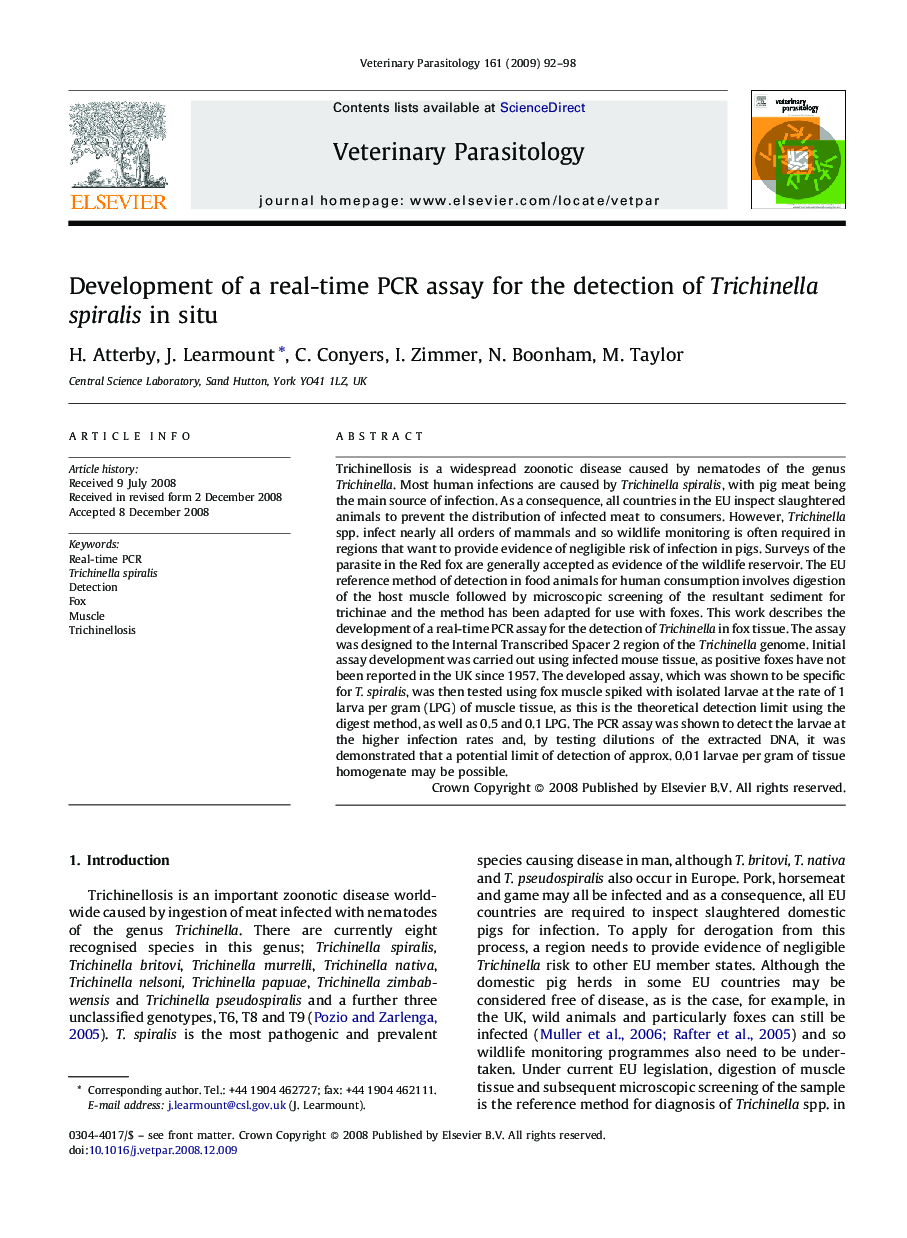| Article ID | Journal | Published Year | Pages | File Type |
|---|---|---|---|---|
| 2471112 | Veterinary Parasitology | 2009 | 7 Pages |
Trichinellosis is a widespread zoonotic disease caused by nematodes of the genus Trichinella. Most human infections are caused by Trichinella spiralis, with pig meat being the main source of infection. As a consequence, all countries in the EU inspect slaughtered animals to prevent the distribution of infected meat to consumers. However, Trichinella spp. infect nearly all orders of mammals and so wildlife monitoring is often required in regions that want to provide evidence of negligible risk of infection in pigs. Surveys of the parasite in the Red fox are generally accepted as evidence of the wildlife reservoir. The EU reference method of detection in food animals for human consumption involves digestion of the host muscle followed by microscopic screening of the resultant sediment for trichinae and the method has been adapted for use with foxes. This work describes the development of a real-time PCR assay for the detection of Trichinella in fox tissue. The assay was designed to the Internal Transcribed Spacer 2 region of the Trichinella genome. Initial assay development was carried out using infected mouse tissue, as positive foxes have not been reported in the UK since 1957. The developed assay, which was shown to be specific for T. spiralis, was then tested using fox muscle spiked with isolated larvae at the rate of 1 larva per gram (LPG) of muscle tissue, as this is the theoretical detection limit using the digest method, as well as 0.5 and 0.1 LPG. The PCR assay was shown to detect the larvae at the higher infection rates and, by testing dilutions of the extracted DNA, it was demonstrated that a potential limit of detection of approx. 0.01 larvae per gram of tissue homogenate may be possible.
